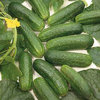Product Categories Vegetable Seeds D-P Melon Melon Emir F1 10 Sweet Cucurnis Melo Seeds
Melon Emir F1 10 Sweet Cucurnis Melo Seeds
Product no.: SEEDV057
In stock
Delivery period: 1 working days
We also recommend
|
Other items you may also want to consider:
|
* Prices plus VAT, plus delivery
Customers who bought this product also bought
|
|
Gherkin Parisian Pickling Vegetable Seeds
from
£0.88
*
|
Melon Honeydew 10 Fruit Seeds
£0.93
*
|
|
Tomato Black Cherry Vegetable Seeds
from
£1.05
*
|
Carrot Rainbow Blend 400 Vegetable Seeds
from
£0.97
*
|
* Prices plus VAT, plus delivery
Browse this category: Melon



















